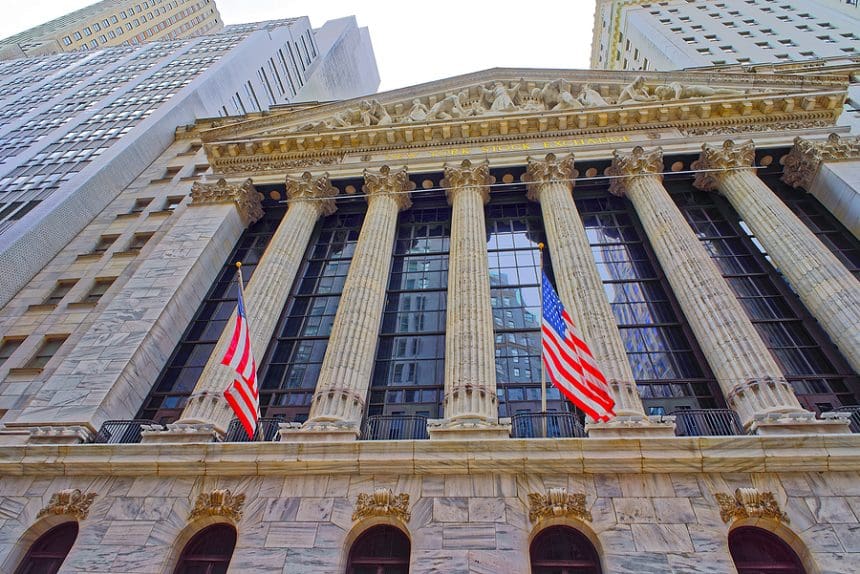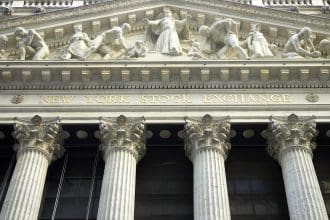US Financial Markets Close Mixed as Fed Holds Rates, Big Tech Earnings Drive Nasdaq Higher
ST. LOUIS, MO (STL.News) Financial Markets — On Wednesday, July 30, 2025, U.S. financial markets closed with a mixed performance, reflecting investor caution amid steady interest rates, surprising economic data, and earnings from major tech companies. While the Nasdaq advanced on the back of strong corporate results, the Dow Jones Industrial Average and the S&P 500 experienced slight pullbacks following the latest Federal Reserve policy announcement and ongoing concerns about inflation.
This article offers a comprehensive overview of the day’s market activity, key drivers, sector performance, and outlook, featuring SEO-optimized content designed to inform and engage financial news readers.
US Financial Markets – Federal Reserve Holds Rates Steady, Signals Patience
As anticipated, the Federal Reserve announced it would maintain its benchmark interest rate in the range of 4.25% to 4.5%, marking another pause in its tightening cycle. The decision came as inflation shows signs of easing, but not at a pace that would justify immediate rate cuts.
Fed Chair Jerome Powell emphasized a “data-dependent” approach going forward. While markets had priced in some probability of a rate cut in September, Powell’s comments suggested that the Federal Open Market Committee (FOMC) is in no rush to pivot to monetary easing.
“We’re prepared to maintain the current policy stance as long as necessary to bring inflation down to our 2% target,” Powell said during his press conference. “While progress has been made, the risks remain balanced and we must remain vigilant.”
US Financial Markets – Economic Data: GDP and Employment Beat Expectations
Adding to market complexity was a stronger-than-expected GDP report. The U.S. economy expanded at an annualized rate of 3.0% in Q2, well above the consensus estimate of 2.3%. However, analysts pointed out that net exports and inventory adjustments—both influenced by ongoing trade distortions and tariffs—contributed disproportionately to growth.
Notably, the ADP private payrolls report showed that 312,000 jobs were added in July, exceeding forecasts and reinforcing the labor market’s resilience. While job growth is typically positive, in the context of Fed policy, it reduces the urgency to cut interest rates—potentially delaying any relief for rate-sensitive sectors.
Market Recap: Indexes Diverge
-
Dow Jones Industrial Average (DJIA): The blue-chip index fell 171 points, or 0.4%, closing at 35,845.52. The decline followed a brief rally earlier in the session when the index nearly touched a new record high.
-
S&P 500 Index: The benchmark index dipped 0.1% to finish at 5,482.68, as gains in technology and healthcare were offset by weakness in industrials and consumer staples.
-
Nasdaq Composite: The tech-heavy index rose 0.2%, closing at 18,250.79, driven by strong earnings from Microsoft and Meta Platforms, which reassured investors about the tech sector’s profitability.
US Financial Markets – Big Tech Earnings Propel Nasdaq
After the market closed on Tuesday, Microsoft (MSFT) and Meta Platforms (META) reported quarterly results that significantly beat expectations.
- Microsoft posted earnings per share (EPS) of $3.65 on revenue of $76.4 billion, versus expectations of $3.37 EPS and $73.9 billion in revenue. The company cited strong demand for cloud services and AI-integrated productivity tools.
- Meta Platforms impressed with $7.14 EPS on $45.5 billion in revenue, easily surpassing estimates. Advertising revenue recovered strongly, and its Reality Labs division showed signs of narrowing losses.
Both companies saw after-hours gains, contributing to a positive spillover effect on other Nasdaq constituents during Wednesday’s trading.
US Financial Markets – Sector Highlights: Winners and Losers
- Technology: The top-performing sector of the day, thanks to Microsoft and Meta, with other names like Nvidia and Alphabet seeing gains in sympathy.
- Healthcare: Outperformed after Humana (HUM) beat earnings expectations and raised its forward guidance, lifting the broader healthcare index.
- Consumer Staples: Struggled due to margin concerns. Mondelez (MDLZ) dropped sharply after warning that elevated cocoa prices were impacting profit outlooks.
- Transportation & Logistics: Old Dominion Freight Line (ODFL) disappointed with weaker-than-expected earnings, citing soft freight demand and margin compression.
US Financial Markets – Commodities and Bond Market Movements
- Oil Prices: WTI crude climbed above $70 per barrel, supported by inventory drawdowns and geopolitical tensions in the Middle East. Energy stocks were marginally higher.
- Gold prices gained modestly, closing at $2,021 per ounce, as investors sought safety amid mixed economic signals and uncertainty surrounding the Fed’s actions.
- Treasury Yields: The 10-year Treasury yield rose to 4.38%, reflecting diminished expectations for near-term rate cuts and the stronger GDP print.
- U.S. Dollar: The dollar strengthened against a basket of global currencies, particularly the euro and yen, as interest rate differentials continued to favor the greenback.
US Financial Markets – Investor Sentiment and Market Outlook
Despite the mixed performance in equities, investor sentiment remains cautiously optimistic. The Fear & Greed Index remains in “neutral” territory, reflecting balanced market forces. Traders and analysts are now shifting focus to:
-
Upcoming earnings from Apple, Amazon, and Alphabet are later this week.
-
July’s Personal Consumption Expenditures (PCE) inflation index, due Friday, will further shape Fed expectations.
-
Geopolitical tensions and trade policies, particularly in the context of ongoing tariff disputes, are distorting trade balances and inflation data.
Market strategists warn of elevated valuations, especially in mega-cap tech stocks, with some raising concerns that a potential bubble is forming in the speculative corners of the market. Nonetheless, liquidity remains strong, and economic momentum is intact—at least for now.
Conclusion: Tech Drives Gains While Broader Market Hesitates – US Financial Markets
The U.S. financial markets closed with a split personality—tech optimism on one side and macroeconomic caution on the other. Investors applauded stellar earnings from Microsoft and Meta. Still, broader concerns around the Federal Reserve’s path, persistent inflation, and international trade disruptions kept the Dow and S&P 500 from joining the Nasdaq in positive territory.
As markets digest a steady stream of earnings reports and economic data in the days ahead, volatility is expected to remain elevated, and clarity on inflation and Fed policy will be pivotal to determining the next directional move for Wall Street.
Stay tuned to STL.News for continued coverage of market developments and financial analysis that matters.
© 2025 STL.News/St. Louis Media, LLC. All Rights Reserved. Content may not be republished or redistributed without express written approval. Portions of our content may be created with the assistance of AI technologies, like Gemini or ChatGPT, and are reviewed by our human editorial team. For the latest news, head to STL.News.











